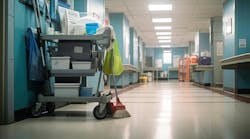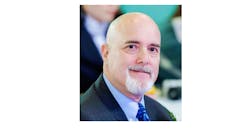Even when purchasing the greenest of green cleaning products, cleaning doesn’t happen magically. Regardless of the number of third-party certifications, price, packaging and even performance, products don’t perform all by themselves. Chemicals, floor coatings, equipment and other tools and supplies used to keep schools and universities clean, healthful, safe and productive don’t work by magic. Someone has to use them, dilute them, apply them and maintain them. And even the greenest of products, if used improperly, can harm the health of cleaning personnel and school occupants while contributing to unnecessary environmental damage.
Although there is no magic wand for cleaning, there is a way to make magic happen—and that magic is training. Because summer break typically is the time when schools and universities provide training for cleaning personnel, they should consider the following to make the magic work:
•Different people need different training. Not all people are the same, and training is the most effective when it is designed to meet individual staff members’ needs based on how they learn and their level of knowledge. Some people learn well sitting in a classroom, but the majority of cleaning personnel seem to learn better through hands-on training. And don’t forget obvious issues, such as language and cultural barriers. Know the people involved and consider if the learning approach can be flexible.
•One size does not fit all. Many custodial teams are made of workers ranging from those with little experience to those who have worked at the profession for 20 or more years and are experts at their craft. Therefore, it is important to provide the appropriate level of training for each group. It is relatively easy to find trainers and training materials for beginners. Far too often, cleaning veterans are used to train the beginner, but it is important to challenge the veteran as well. And many innovations may challenge and stimulate even the most seasoned staff.
•New product and procedural training. Training is required for any new hazardous chemical products entering the workplace. All new products require training, even when it is a direct replacement for an existing product. Beyond safety training and individual product use, re-examining and reinforcing proper techniques and processes help to minimize future problems, as well as increase the efficiency in which a task is accomplished, saving time and money.
•Engagement. Both novice and experienced cleaning workers believe that they know how to clean and may not appreciate being lectured at or patronized. This is especially true of supervisors and older, tenured workers who can help lead the actual training. But it is important to engage all learners in the training, as this will result in long-term results.
•Feedback. Because training programs should be ongoing, it is important to actively request feedback. The best training programs provide a pre- and post-test, which creates an opportunity to determine if the training met the learning objectives. Also, staff should feel confident that there will be no retributions if they are critical of the training.
•Reinforcement. Good habits are created only through repetition in a manner that is consistent and ongoing. Effective trainers and training programs understand this. One important consideration when evaluating a training program is what is offered on an ongoing basis.
•Consider a preview. Because 70 to 80 percent of a cleaning budget is labor, it is important for workers to know what is expected and how to perform the tasks. If the annual training program is important (which it should be), consider doing a small trial run with experienced workers to make valuable last-minute improvements that can result in the magic of a successful program.


